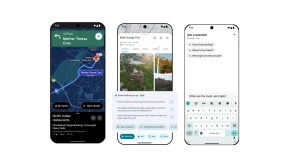Festive shopping and the fine print of no-cost EMIs
One of the most visible offers this time of year is the no-cost EMI, promoted as an interest-free way to spread out your payments. It looks simple and convenient at first glance.
 Buying a smartphone, washing machine, or furniture definitely feels more affordable when the payments are
smaller and don’t pinch the budget. (Credit: Pexels)
Buying a smartphone, washing machine, or furniture definitely feels more affordable when the payments are
smaller and don’t pinch the budget. (Credit: Pexels)Festivals in India are synonymous with shopping. September onwards, retailers and e-commerce platforms begin rolling out deals on everything, from refrigerators to smartphones.
One of the most visible offers this time of year is the no-cost EMI, promoted as an interest-free way to spread out your payments. It looks simple and convenient at first glance. Yet, on a closer look, the “no-cost” tag has fine print that shoppers should understand before opting in.
No-cost EMIs – How they work
In a regular EMI transaction, you pay the principal and the interest. In a no-cost EMI, the interest isn’t waived but is usually absorbed by the dealer or manufacturer by adjusting the product’s price. Here’s an example to understand how it works.
For instance, a Rs 30,000 appliance on a 12-month EMI at 12 per cent interest would approximately cost about Rs 33,600 in total. In a no-cost EMI, you still pay only Rs 30,000, with the seller adjusting the price to absorb the interest. This way, the bank earns its interest, the seller boosts their sales, and you get the flexibility of paying in smaller, more affordable instalments.
Why do shoppers prefer it?
No-cost EMIs are popular for a reason. Instead of paying the full price upfront, you can spread the cost over several months, making big-ticket purchases easier to handle during the festive season. Leading e-commerce platforms highlight this option, letting shoppers break high-value items into smaller, manageable instalments. Buying a smartphone, washing machine, or furniture definitely feels more affordable when the payments are
smaller and don’t pinch the budget.
Hidden costs of no-cost EMIs
Despite its name, a no-cost EMI typically involves certain trade-offs that consumers should be aware of. First is missing out on upfront discounts. For example, a TV priced at Rs 22,000 might cost Rs 19,500 if paid in full, but, on EMI, may still cost Rs 22,000. So the saving is something you should consider.
Next are the additional charges. Processing fees for no-cost EMIs can range from around Rs 199 to Rs 699 plus tax, depending on the product or transaction. Missing an instalment may trigger late fees of Rs 500 to Rs 750, along with penal interest. All these extras are worth factoring in when assessing the true cost of the offer.
Impact on your credit
A no-cost EMI is treated like a loan. The blocked amount reduces your available credit and appears on your credit report. Large transactions can push utilisation above the recommended 30–40 per cent, which may affect your score. Missing an EMI can be costly, with late fees and reports to credit bureaus. On the other hand, timely repayments help build a stronger credit history. Like any borrowing, the impact depends on how responsibly you
manage it.
Should you choose it?
Planning a no-cost EMI purchase this festive season? Here’s what to consider. If you can comfortably pay upfront, it’s often cheaper — you get cash discounts and avoid processing fees. But if you’re tight on cash and spreading payments would ease the burden, then a no-cost EMI makes sense.
Whether it’s a no-cost EMI or any other offer, know what you’re signing up for. List what you need, compare available deals, and buy only what you need. If you choose a no-cost EMI, check for extra charges and what happens if you pay late. Used smartly, it can make purchases easier, but handled poorly, it can end up costing more than you expected.
The writer is CEO, BankBazaar.com.



- 01
- 02
- 03
- 04
- 05




























